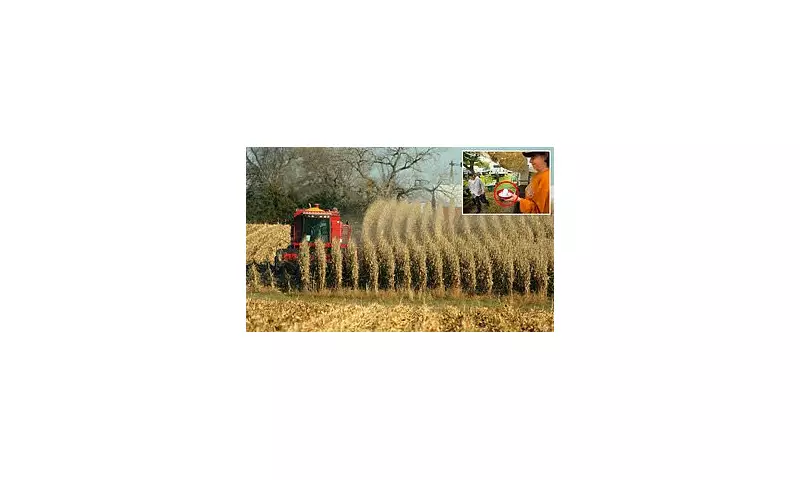
The quiet Nebraska town of Cozad, home to fewer than 4,000 residents, has been left devastated after a catastrophic hailstorm pummelled the community with softball-sized ice, causing an estimated $100 million in damages – an almost unimaginable loss for such a small population.
The Night Everything Changed
In June 2024, a ferocious storm descended upon Cozad, located 200 miles from Omaha, unleashing hail of unprecedented size and destructive power. The tempest ripped roofs clean off buildings, peeled paint from houses, shattered countless windows, and flattened garages. The town's school and hospital suffered near-total destruction, forcing the emergency room to close for hours.
Longtime resident Jennifer McKeone described the scene as traumatic. "People say that they have PTSD from that storm. It looked like someone took a machine gun to the side of the houses," she told Daily Mail. McKeone, who previously owned two rental properties in town, saw both homes so severely damaged that insurance refused to cover repairs – then her insurer dropped her coverage entirely.
Insurance Crisis Deepens
The Cozad disaster highlights a growing insurance crisis across America's heartland. Nebraska now has the highest home insurance premiums in the United States, averaging $6,400 annually – $4,000 above the national average according to Bankrate. Deductibles have skyrocketed to between $1,000 and $5,000, placing enormous financial strain on homeowners.
Josh Tapio, an agent at All Lines Insurance in Omaha, explained the situation: "The prices have increased because everything to do with owning a home has gotten more expensive. The damage to roofs alone should be its own category. It's unaffordable for many homeowners here, and it's only getting more expensive."
Following the storm, numerous homeowners and business owners found themselves dropped by their insurers, forced to scramble for new, more expensive policies. Those who retained coverage faced overnight premium increases that many struggling families couldn't afford.
Climate Change Connection
Experts warn that what happened in Cozad is part of a disturbing trend. While hailstorms rarely capture national attention like hurricanes or wildfires, they're becoming increasingly frequent and destructive across central US states. Hail now causes more home-damage dollars nationwide than hurricanes in some years, according to insurance data.
Deborah Bathke, Nebraska's state climatologist, told NPR that atmospheric conditions producing billiard ball-sized hail are becoming more common across central and eastern states. As the planet warms, the Great Plains region faces the prospect of even more frequent severe hailstorms.
The Insurance Information Institute estimates that hailstorms caused approximately $160 billion in damage to US homes in 2024 alone – a staggering figure that underscores the scale of this growing problem.
Community Struggles to Recover
A year after the disaster, many Cozad residents still live in homes with boarded-up windows and tarpaulin-covered roofs, unable to afford necessary repairs. McKeone described ongoing challenges: "There was a lot of glass inside people's homes, a lot of windows got hit and the glass flew in not out, and they still have the boarding up from after the storm which was a year ago now."
The situation has created a domino effect on property values and housing affordability. Professor Zhigang Feng, who researches post-disaster recovery, noted: "When insurance prices rise, the overall cost of homeownership goes up, limiting the pool of potential buyers able to afford the monthly expense. What's missing is political urgency."
This forces sellers to reduce prices or leave properties vacant, subsequently dragging down neighbouring home values and creating long-term economic challenges for the community.
Broader Implications
The hail threat extends far beyond Cozad. According to the Interactive Hail Map, the Cozad area has experienced 45 reports of hail by trained spotters and has been under severe weather warnings 30 times during the past 12 months. Doppler radar has detected hail at or near Cozad on 107 occasions over that period.
A US Treasury report indicates that this growing weather threat is "saddling average Americans with huge bills" across the entire middle of the country. Insurance companies are increasingly reluctant to provide coverage in high-risk areas like Nebraska, with many residents finding themselves unable to obtain affordable protection.
As McKeone summarised the insurance dilemma: "Insurance companies don't wanna touch you because we have this bad weather. If you want it you have to pay. They've got you. Your hands are tied."
The situation in Cozad serves as a stark warning of how climate-driven weather events combined with insurance market challenges can devastate small communities, creating financial burdens that may take generations to overcome.





